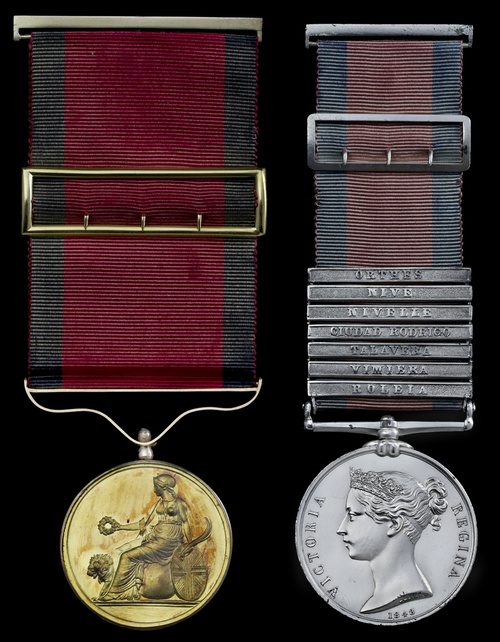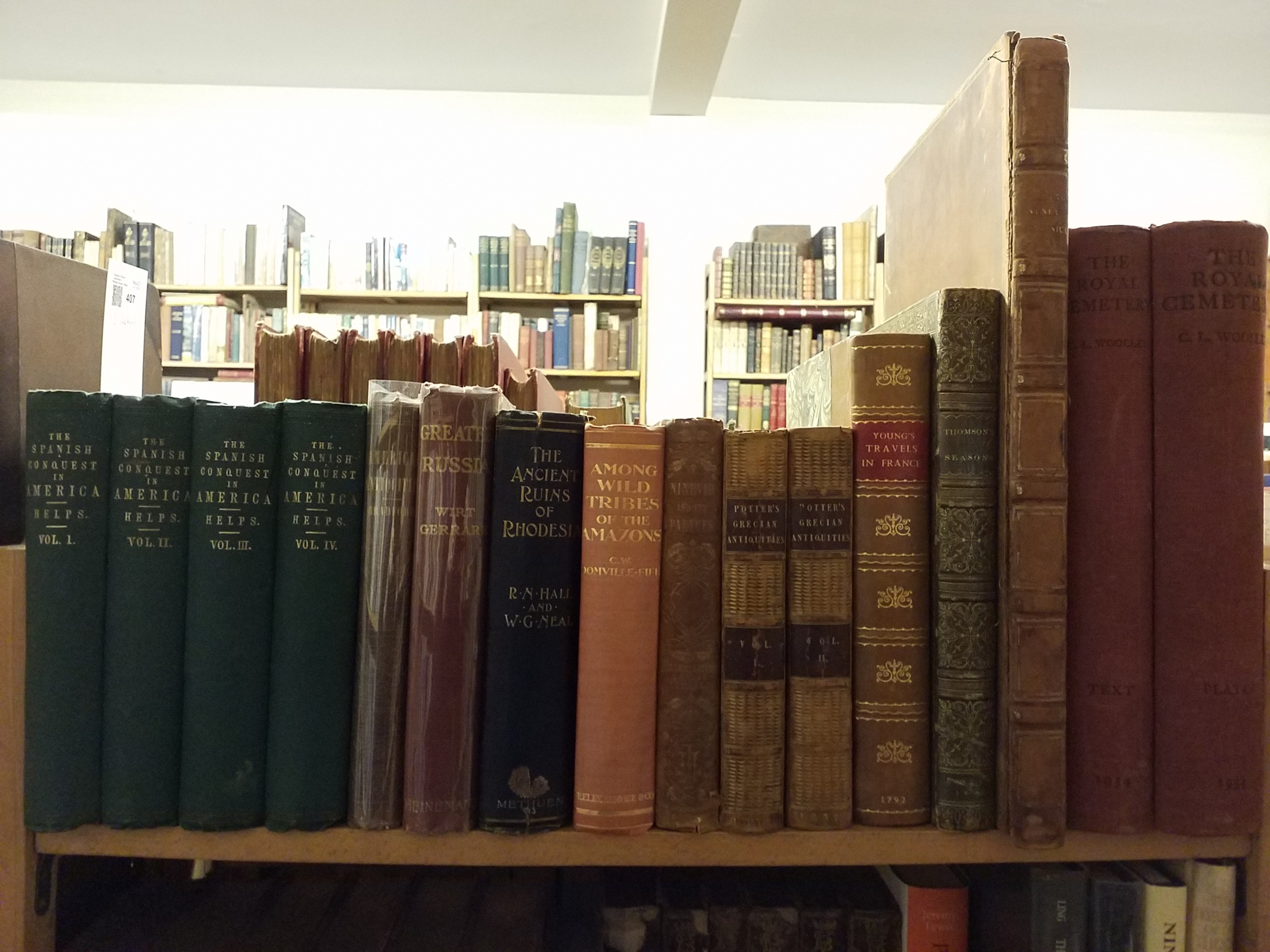Property of a New York Collector
(America) — William Alexander 1st Earl of StirlingThe contract for the "Canadian Mayflower," a 1622 "voyage now intended by gods grace to be made wth the said ship to the North parts of Virginia or new England and other parts and places thereabouts''
Manuscript broadside on paper (686 x 610 mm), written in a neat clerical hand, signed by the colonist Sir William Alexander and by the founder of New Hampshire, John Mason being an agreement made between Alexander, Mason, and Sir Robert McClellane on the one part and Thomas Hopkins, mariner of "Rederith,'' Surrey, and master of the one-hundred-ton ship Planter on the other part, with provisions that Hopkins should use his utmost skill for the safety of goods and passengers, signed by Alexander, McClellane, and Mason and with their pendant seals, witnessed on the verso by Robert Norton, servant to Francis Mosse, notary public, 9 April 1622; some very light dampstaining, a few tiny holes at intersecting folds. Handsomely matted, framed, and glazed. Accompanied by a letter signed by King James I ("James R''), one page (289 x 180 mm), 27 December 1621, directing that Alexander be paid an appropriate pension "for sending away a Colony to Nova Scotia,'' with integral blank bearing contemporary endorsement and royal seal; lightly soiled, tiny losses at folds.
The contract for the "Canadian Mayflower.'' The statesman and poet Sir William Alexander Earl of Stirling (1567?–1540), received in 1621 a massive royal grant in Canada comprising what is now the three maritime provinces of Canada; the charter was subsequently increased to include jurisdiction over the territory that is now the state of Maine. He endeavored to promote colonization by publishing his Encouragement to Colonies in 1624 (reissued in 1630 with a cancel, and more expansive title: The Mapp and Description of New-England; together with a Discourse of Plantation, and Collonies: also, a Relation of the Nature of the Climate, and how it agrees with our Owne Country England. How neere it lyes to New-found-land, Virginia, Noua Francia, Canada, and other parts of the West-Indies).
In 1626 Lord Stirling was appointed as Secretary of State for Scotland, an office he held until his death in 1640. Stirling's promotional works made unrealistic promises about the new territory and colonists were offered meager inducement to emigrate. The colony was also unsettled by the Anglo-French War (1627–1629). He did briefly establish a Scottish settlement at Charles Fort (later Port-Royal). But when the territory of his grant was receded to France in 1632, he lost his fortune. "In breadth of conception [Alexander's colonizing] plan rivaled any of the bold and daring efforts made in the preceding reign to extend England's greatness beyond the seas, and only the shifting give and take of international diplomacy brought it finally to a premature and disastrous end'' (Thomas MacGrail, Sir William Alexander First Earl of Stirling: A Biographical Study).
John Mason (1586–1635) was the founder of New Hampshire. In 1620 Mason, who had been resident in Newfoundland for some time, published A Briefe Discourse of the New-Found-Land, with the Situation, Temperature, and Commodities thereof, inciting Our Nation to Goe Forward in that Hopefull Plantation Begunne. When he returned to England in 1621, he was consulted by Alexander about the proposed settlement to Nova Scotia, as well as by Sir Ferdinando Gorges about colonizing Maine. He was granted a patent on 9 March 1621/22 for all the land between the Nahumheik and Merrimack rivers, and sailed the following year as Deputy-Governor of New England. A subsequent grant to him in 1631 inspired a fresh wave of settlement and consolidation in the New England area that became known as New Hampshire.
The date of the present document, just two years after the Pilgrim Fathers settled New Plymouth, was a vital year in the early history of British colonization of North America, marking, among other events, the Jamestown massacre of some of 347 settlers, a quarter of the population of the Virginia colony, by the Powhaten Confederacy led by Chief Opechancanough on 22 March. At the time, Virginia presented Newfoundland and Nova Scotia with the keenest competition for English settlers. In his Briefe Discourse, Mason admitted "the superiority of Virginia's soil and climate, but remind[ed] the reader that Newfoundland was only about half as far from England as Virginia … and that there was greater security from enemies, both foreign and native, on Newfoundland" (Parker, Books to Build an Empire, p. 225).
Significant documents relating to the early colonial history of America are extremely uncommon on the market.
PROVENANCE:The Most Honourable the Marquess of Downshire (Sotheby's London, 14 December 1989, lot 217) — Sotheby's New York, 7 December 1999, lot 14A (undesignated consignor) — Sotheby's New York, 21 June 2007, lot 20 (undesignated consignor)
Property of a New York Collector
(America) — William Alexander 1st Earl of StirlingThe contract for the "Canadian Mayflower," a 1622 "voyage now intended by gods grace to be made wth the said ship to the North parts of Virginia or new England and other parts and places thereabouts''
Manuscript broadside on paper (686 x 610 mm), written in a neat clerical hand, signed by the colonist Sir William Alexander and by the founder of New Hampshire, John Mason being an agreement made between Alexander, Mason, and Sir Robert McClellane on the one part and Thomas Hopkins, mariner of "Rederith,'' Surrey, and master of the one-hundred-ton ship Planter on the other part, with provisions that Hopkins should use his utmost skill for the safety of goods and passengers, signed by Alexander, McClellane, and Mason and with their pendant seals, witnessed on the verso by Robert Norton, servant to Francis Mosse, notary public, 9 April 1622; some very light dampstaining, a few tiny holes at intersecting folds. Handsomely matted, framed, and glazed. Accompanied by a letter signed by King James I ("James R''), one page (289 x 180 mm), 27 December 1621, directing that Alexander be paid an appropriate pension "for sending away a Colony to Nova Scotia,'' with integral blank bearing contemporary endorsement and royal seal; lightly soiled, tiny losses at folds.
The contract for the "Canadian Mayflower.'' The statesman and poet Sir William Alexander Earl of Stirling (1567?–1540), received in 1621 a massive royal grant in Canada comprising what is now the three maritime provinces of Canada; the charter was subsequently increased to include jurisdiction over the territory that is now the state of Maine. He endeavored to promote colonization by publishing his Encouragement to Colonies in 1624 (reissued in 1630 with a cancel, and more expansive title: The Mapp and Description of New-England; together with a Discourse of Plantation, and Collonies: also, a Relation of the Nature of the Climate, and how it agrees with our Owne Country England. How neere it lyes to New-found-land, Virginia, Noua Francia, Canada, and other parts of the West-Indies).
In 1626 Lord Stirling was appointed as Secretary of State for Scotland, an office he held until his death in 1640. Stirling's promotional works made unrealistic promises about the new territory and colonists were offered meager inducement to emigrate. The colony was also unsettled by the Anglo-French War (1627–1629). He did briefly establish a Scottish settlement at Charles Fort (later Port-Royal). But when the territory of his grant was receded to France in 1632, he lost his fortune. "In breadth of conception [Alexander's colonizing] plan rivaled any of the bold and daring efforts made in the preceding reign to extend England's greatness beyond the seas, and only the shifting give and take of international diplomacy brought it finally to a premature and disastrous end'' (Thomas MacGrail, Sir William Alexander First Earl of Stirling: A Biographical Study).
John Mason (1586–1635) was the founder of New Hampshire. In 1620 Mason, who had been resident in Newfoundland for some time, published A Briefe Discourse of the New-Found-Land, with the Situation, Temperature, and Commodities thereof, inciting Our Nation to Goe Forward in that Hopefull Plantation Begunne. When he returned to England in 1621, he was consulted by Alexander about the proposed settlement to Nova Scotia, as well as by Sir Ferdinando Gorges about colonizing Maine. He was granted a patent on 9 March 1621/22 for all the land between the Nahumheik and Merrimack rivers, and sailed the following year as Deputy-Governor of New England. A subsequent grant to him in 1631 inspired a fresh wave of settlement and consolidation in the New England area that became known as New Hampshire.
The date of the present document, just two years after the Pilgrim Fathers settled New Plymouth, was a vital year in the early history of British colonization of North America, marking, among other events, the Jamestown massacre of some of 347 settlers, a quarter of the population of the Virginia colony, by the Powhaten Confederacy led by Chief Opechancanough on 22 March. At the time, Virginia presented Newfoundland and Nova Scotia with the keenest competition for English settlers. In his Briefe Discourse, Mason admitted "the superiority of Virginia's soil and climate, but remind[ed] the reader that Newfoundland was only about half as far from England as Virginia … and that there was greater security from enemies, both foreign and native, on Newfoundland" (Parker, Books to Build an Empire, p. 225).
Significant documents relating to the early colonial history of America are extremely uncommon on the market.
PROVENANCE:The Most Honourable the Marquess of Downshire (Sotheby's London, 14 December 1989, lot 217) — Sotheby's New York, 7 December 1999, lot 14A (undesignated consignor) — Sotheby's New York, 21 June 2007, lot 20 (undesignated consignor)















Testen Sie LotSearch und seine Premium-Features 7 Tage - ohne Kosten!
Lassen Sie sich automatisch über neue Objekte in kommenden Auktionen benachrichtigen.
Suchauftrag anlegen